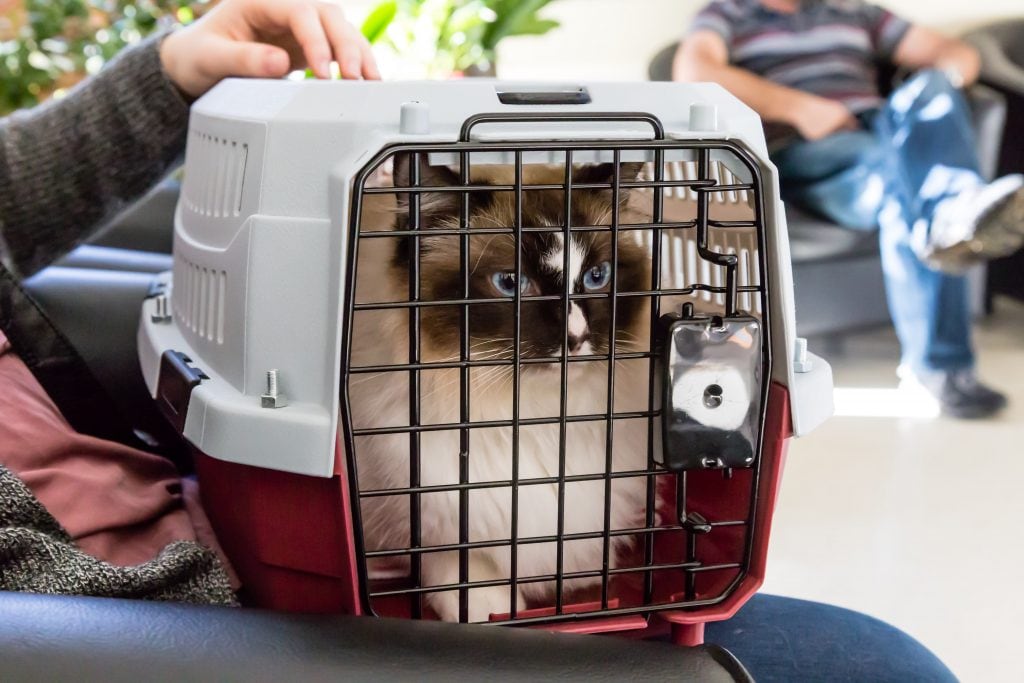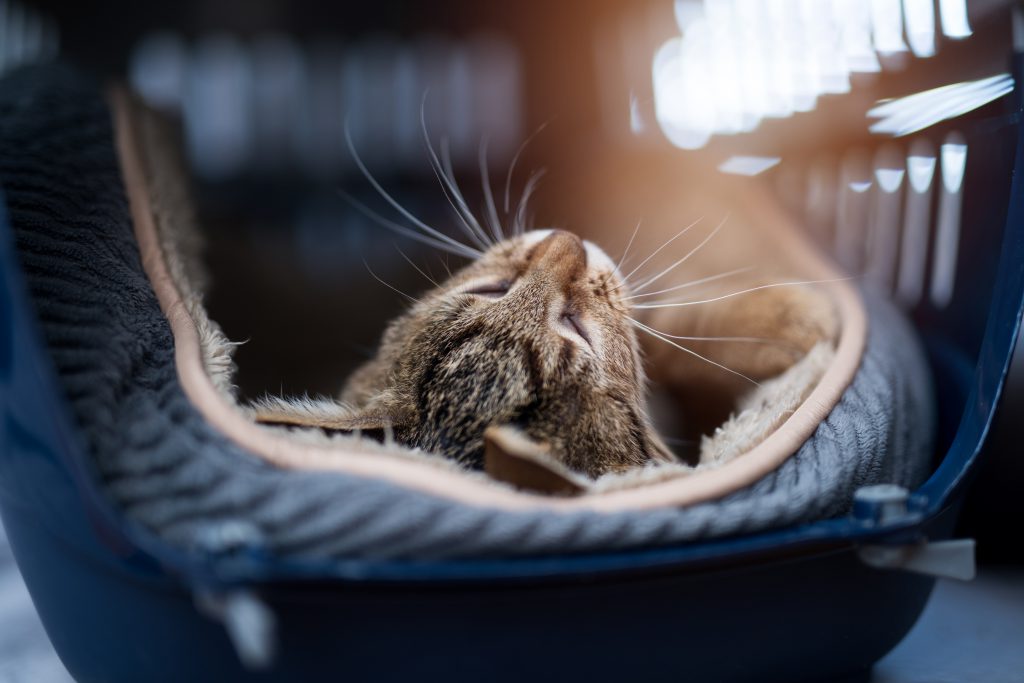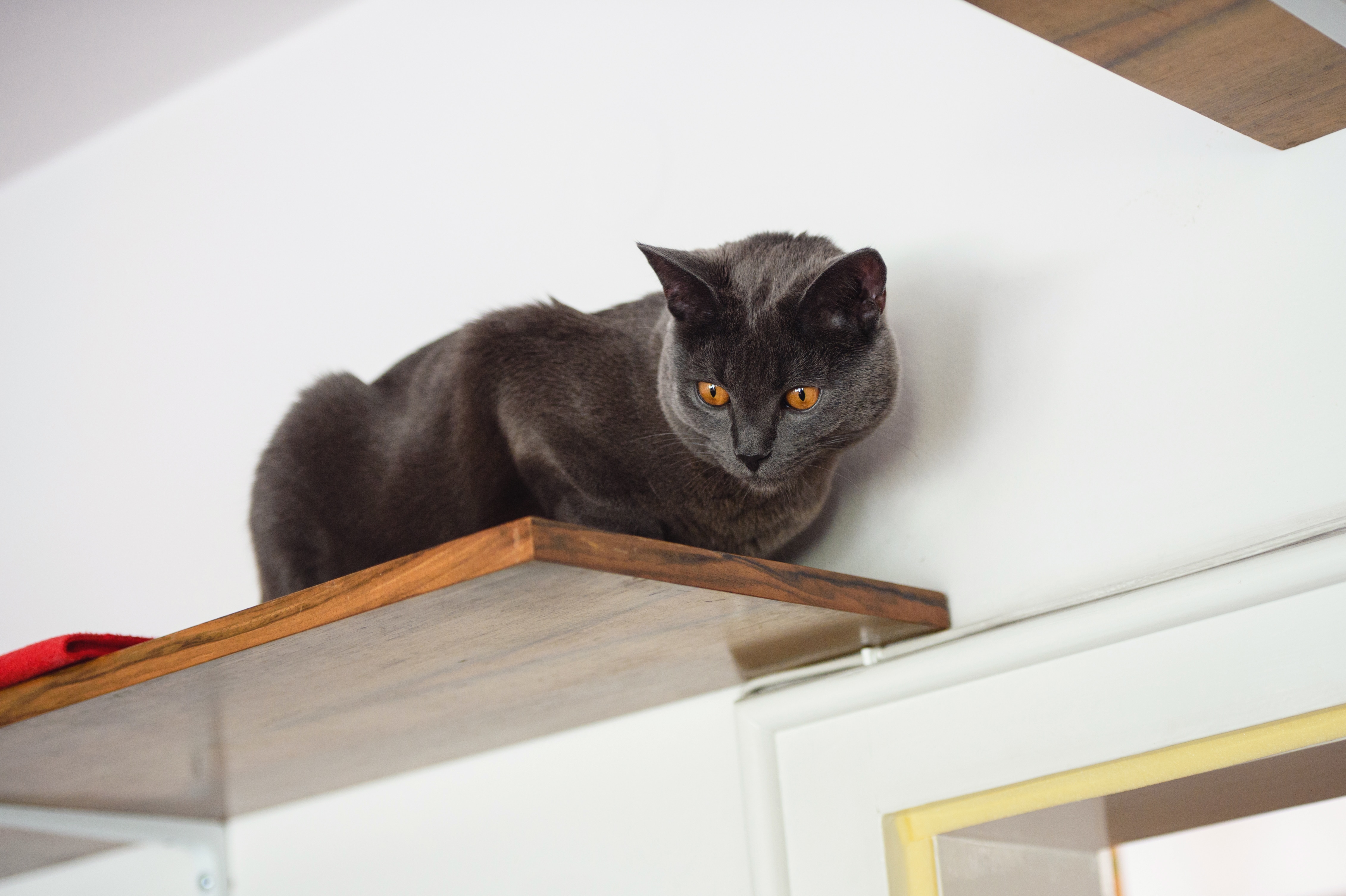Bringing a cat to the veterinary practice is much more difficult in comparison to their canine counterparts.
Cats are very easily stressed, and even just the sight of the pet carrier can set them off. As such, cat owners often weigh up the severity of the health issue against the stress of travelling in the car and being at the vet clinic. This means they are more likely to wait longer before visiting a vet clinic, or they may decide to not bring their cat in at all.
A stressed cat makes for a stressed owner
A stressed cat often leads to a vicious cycle of anxiety for what we, the veterinary staff, often feel is quite a simple task.
We all know these cats all too well – these are the felines who, as soon as they walk in the door, are very vocal, tend to defaecate or urinate in the carrier; or are prone to vomiting -then causing pet owners to feel guilty for putting their pet in an uncomfortable situation (even though it is what’s best for them).
Can you imagine feeling like this each time you went to the doctor or the dentist!
Cats are very independent creatures and often don’t show pain or discomfort. In fact they are great masters at hiding clinical signs of stress and by the time pet parents know that something is wrong, the issue may be quite advanced and more difficult to treat.

So how do we make it easier for cats and their owners to visit the vet clinic and get the care they need?
Here are some top tips for both veterinary practitioners and cat owners to help cats have a more positive visit to the vet clinic.
Tips for veterinary practitioners
- Consider the cat’s journey through your clinic – go through this step by step and look at how you can reduce their stress as they move through each section of the veterinary practice.
- Ensure all staff understand the unique needs and behaviours of cats.
- Appoint a cat advocate in your practice — someone who ensures the team is trained in gentle handling.
- Use minimum restraint – usually “less is more” works best, as heavy restraint can stress or frighten cats.
- Email a few travelling tips to the client prior to their visit (e.g. Ensure the cat is secured prior to getting the pet carrier out).
- Use a top loading pet carrier. This makes gentle handling easier in terms of picking up and placing the cat back into its carrier. Carriers with a removable top half are even better for easy access and allows part of the examination to be done while the cat is still sitting in the bottom half of the carrier.
- Dedicate a spare room as a special waiting room for cats. Waiting rooms can be extremely stressful for cats due to sights, smells, sounds, and dogs! If your vet clinic has the capacity, utilise the extra space to keep both cats and their pet parents calm while they await their examination.
- Place cats (in their carrier of course) on top of a table in the waiting and consult room – this is a much more comfortable option than being placed on the floor.
- Have a basket of towels or blankets sprayed with pheromones so owners can place the towel over their cat’s carrier.
- Reserve a consult room exclusively for cats and keep a pheromone diffuser plugged in.
- Use mats or soft blankets on the examination table to keep them comfortable.
Appoint a cat advocate in your practice — someone who ensures the team is trained in gentle handling.
Be patient
- Take time and care with examinations to allow the cat to get familiar with the new environment.
- Consider allowing cats out of their carrier to roam the waiting room to get familiarised with the space – however, safety is key, so ensure that no signs of danger of potential escape is present.
- Assure pet parents that it is common for cats to be uncomfortable at the clinic. Once owners understand this, they will have a different perspective and will help their cat be more adaptable to veterinary visits.
- Communicate that you are a cat friendly vet practice; for example, are you supporting cat patients equally in your marketing materials (posters, website, social media)?
- Schedule the next appointment before they leave — Yes, even if this is a year away!
Tips for cat owners
- Keep the cat carrier out and accessible at home. This will nip travel anxiety in the bud by making it a comfortable, safe and available place. We all know that cats love a good box and a space of their own, so place soft bedding and treats in there. This means that when the time comes for travelling, your cat will feel at home in their carrier.
- Slowly get your feline friend used to being in the car by placing them (in their carrier) in the car for a few minutes, and take them back out again without going anywhere. Slowly build this up to ten minutes, and once comfortable, go for a quick car ride around the block.
- Make a few visits to the clinic that do not involve examinations to get your cat used to the space.
- Place a blanket over the cat carrier to reduce stress.
- Do not feed your cat prior to a vet visit to prevent any vomiting.

Cat Clinic Insights
Lastly, I want to share a conversation I had with a veterinary nurse I met. She shared some insights from working in a feline only practice. Being a little canine biased (OK I admit it), I was pretty intrigued, so I asked her what it was she enjoyed most about working only with cats. She explained that she was never a mad cat lover and always preferred dogs over cats. However, she said she never realised just how stressed out all the cats who visited her previous (mixed) practice were until she spent some time working in the cat only clinic.
Since then, she is now an official crazy cat lady (3 cats) and sees a completely different side to nursing them due to the change in behaviour! Sounds like it’s worth making any changes we can to better accommodate the cats we treat – not just for the felines and their owners, but for our benefit too!
For more tips or to become an accredited Cat Friendly Vet Clinic visit International Society of Feline Medicine (ISFM) the veterinary division of International Cat Care to learn more about their worldwide accredited program.

Rae Schafer-Evans, Cert VN, Acc Delta Trainer, Cert IV Business. Veterinary Nurse Coordinator, Hill’s Pet Nutrition Australia
Rae started her working life as a Veterinary Nurse and worked in Small Animal practice. She has had various roles whilst employed with Hill’s Pet Nutrition and is currently Hill’s National Veterinary Nurse Coordinator. Rae’s passion is not only pets but veterinary nurses, she has developed the Hill’s National Veterinary Nurse Programme and coordinates Hill’s Australia vet nurse CE programmes both online and offline with many being replicated throughout Hill’s globally. She is currently working with industry partners to encourage more nurses into the consult room to enhance client and patient care, vet nurse job satisfaction and to free up the veterinarian’s time.
